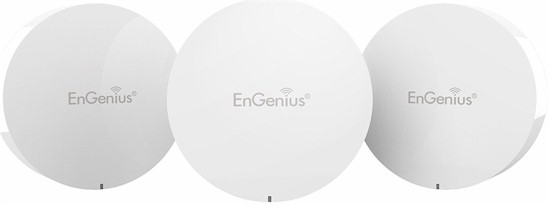
| At a glance | |
|---|---|
| Product | EnGenius EnMesh Whole Home Wi-Fi System (EMR3000-KIT) [Website] |
| Summary | Three-node 2×2 AC1200 class Wi-Fi system with USB storage sharing |
| Pros | • More control than usual via web admin • Supports USB storage sharing |
| Cons | • Very limited documentation |
Typical Price: $0 Buy From Amazon
Introduction
Update 9/29/17 – Corrected flash capacity. Clarified Wi-Fi test conditions. Tested storage performance.
EnGenius is known more for its access points and outdoor Wi-Fi bridges and isn’t a big consumer networking player. Nonetheless, they apparently think they have a shot at getting traction in the consumer Wi-Fi System market as a (very) late entry.
The EnMesh Whole Home Wi-Fi System is yet another Qualcomm-based three node mesh-type Wi-Fi system using older devices that make each 2×2 node AC1200 class.
There are two gigabit Ethernet ports, power port and USB 2.0 port on the rear, the latter supporting SMB storage sharing. Like most other Wi-Fi systems, there’s a Bluetooth radio and iOS and Android apps for "onboarding", aka setup. The shot of the bottom of the device shows screw mounting slots for your convenience.
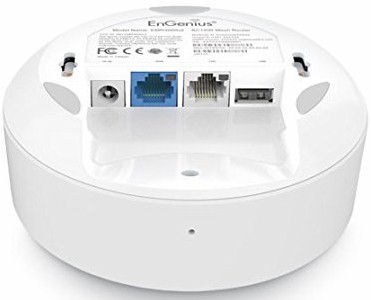
EnMesh rear panel
There is one multicolor LED on the front and a reset hole on the rear. The LED flashes blue during setup to indicate Bluetooth use and steady white, orange or red to indicate "stable", "spotty" and no network connection.
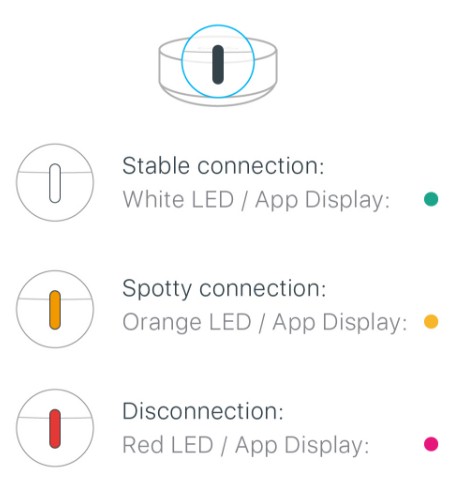
EnMesh LED color decoder
Inside
EnGenius released the FCC ID photos, so I didn’t open the EnMesh up for component identification. Since the product’s FCC ID is A8J-EMR3000V2, I just had to look at the EMR3000(v1), which never made it to market.
Aside from mesh in the product’s name, however, the user manual filed with the FCC lacks any detail on "mesh" features. The V1 was also Qualcomm-based, with one of the radios on a mini-PCIe card and had a single dedicated gigabit WAN port and four-port LAN gigabit switch.
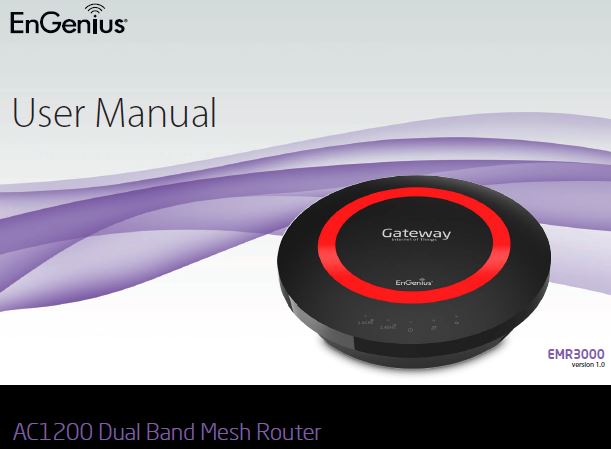
EnMesh V1
The V2 hews closer to what has become the standard for mesh system "pucks", except it uses older components than most. The inside shot shows the two 2.4 GHz and two 5 GHz bent-metal antennas mounted on a metal plate. The plate also serves as a heatsink thermally coupled to at least one of the RF can tops below it, if the FCC photos accurately represent the current design.
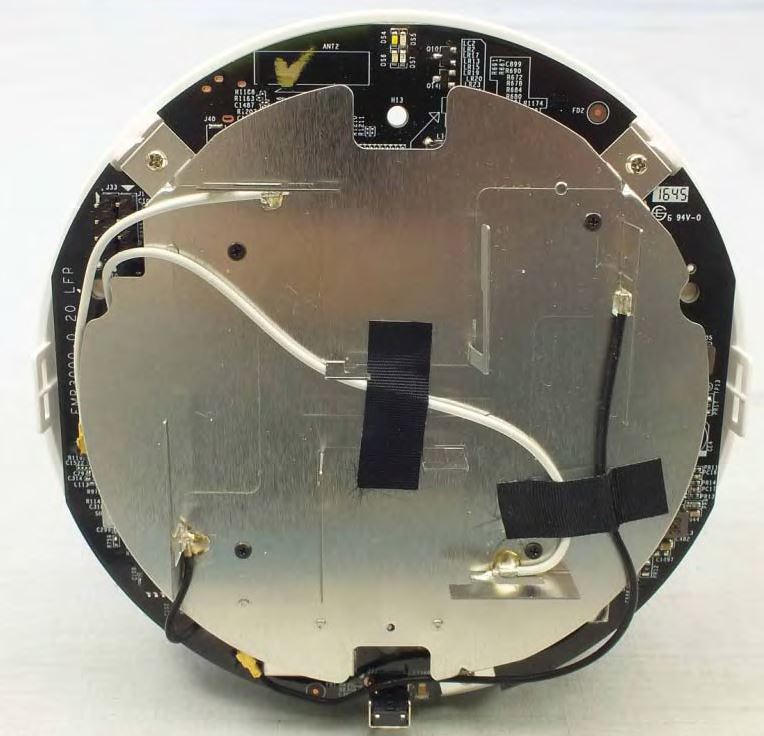
EnMesh inside
The next photo, with heatsinks and RF can tops removed shows separate 2.4 and 5 GHz Qualcomm radios on the left and two Atheros gigabit Ethernet PHYs on the right.
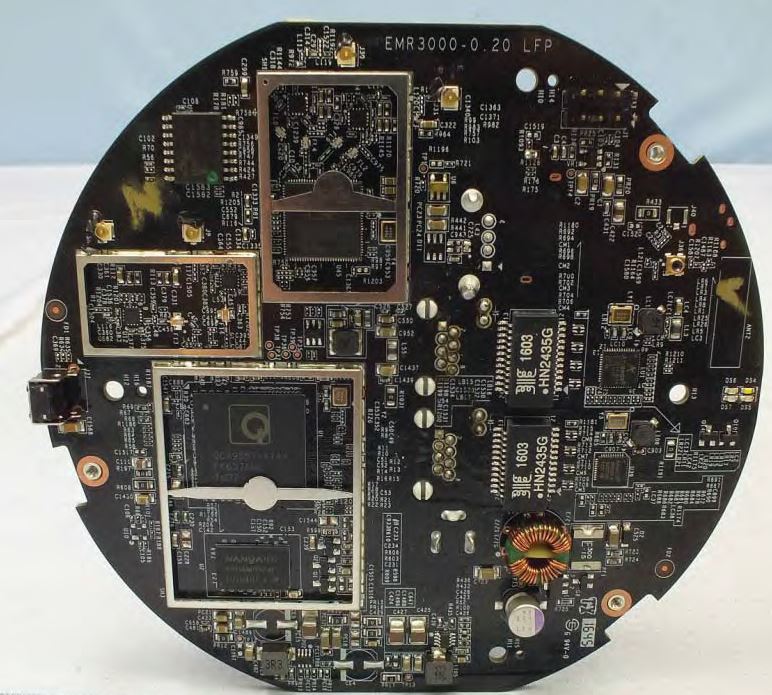
EnMesh board top
The bottom view shows the connectors and TI CC2564B Bluetooth radio
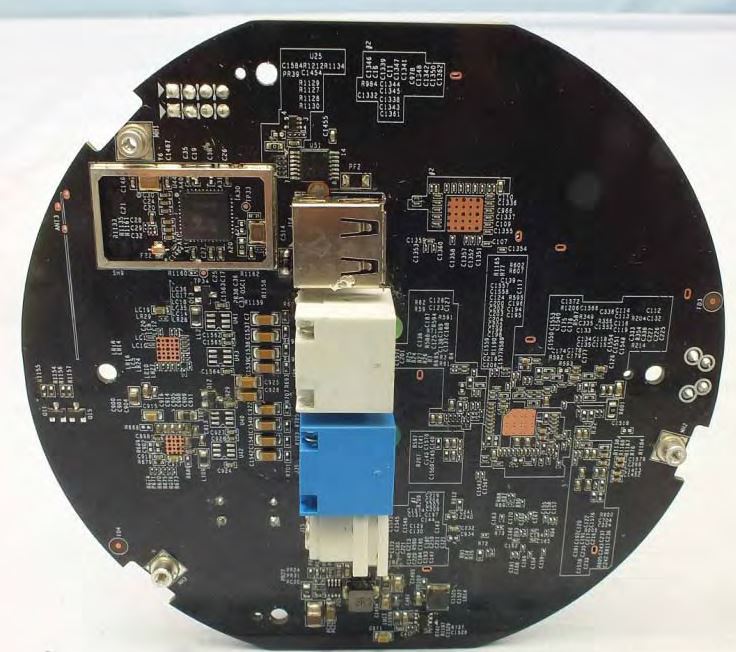
EnMesh board bottom
The table compares EnMesh’s key components against Google Wifi and TP-Link Deco M5, which also do not have a second 5 GHz radio.
| EnGenius EnMesh | Google Wifi | TP-Link Deco M5 | |
|---|---|---|---|
| CPU | Qualcomm QCA9557 2×2 11abgn WiFi SoC | – Qualcomm IPQ4019 – STM32F072 32 bit ARM Cortex-M0 – Infineon STM9615 Trusted Platform Module |
Qualcomm IPQ4019 |
| Switch/Ethernet | AR8033-AL1A + AR8035-A Gigabit Ethernet PHY | QCA8075 | QCA8072 |
| RAM | 128 MB | 512 MB | 256 MB |
| Flash | 32 MB | – 4 GB eMMC (IF5055?) -4 MB Winbond 25Q64FV |
32 MB |
| 2.4 GHz Radio | – In QCA9557 – Unidentified 2.4 GHz power amp (x2) |
– In IPQ4019 – Skyworks SKY8530 2.4 GHz front end (x2) |
– In IPQ4019 – Skyworks 85303-11 2.4 GHz Front End (x2) |
| 5 GHz Radio | – QCA9882 2×2 abgn+ac radio SoC – Unidentified 5 GHz power amp (x2) |
– In IPQ4019 – Skyworks SKY85717-11 5 GHz front end (x2) |
– In IPQ4019 – Qorvo PA5542 5 GHz power amp (x2) http://www.qorvo.com/products/p/RFPA5542 |
| Bluetooth | TI CC2564B dual-mode Bluetooth 4.1 controller | Qualcomm 3003-CL3D (CSR102x?) | CSR 8811 Bluetooth 4.1 |
| ZigBee | N/A | – Silicon Labs EM3581 ZigBee / Thread SoC – Skyworks SKY66109-11 2.4 GHz ZigBee front end |
N/A |
Table 1: Component summary and comparison
Features and Admin
EnMesh is a self-contained system that does not rely on a companion cloud service. It has both app and web interfaces, which provide a disjointed administration experience. Setup must be done with the iOS or Android apps. But once set up, the web admin interface, which lives at 192.168.0.1, allows you to change everything you can change in the app and more. In fact, clicking the Advanced menu item in the app will launch your phone or tablet’s browser. Or at least it is supposed to. On my second generation Android Moto X phone, the app crashed every time.
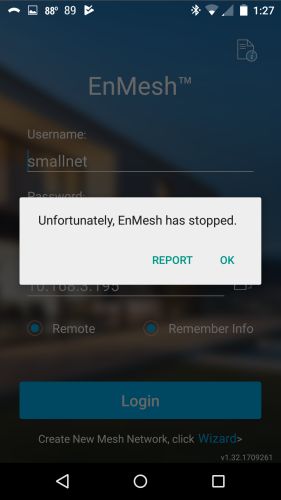
Tried to access Advanced menu
As noted, setup must be done with the app and requires a device with Bluetooth radio. The process is similar to pretty much every other Wi-Fi System setup. You connect the first node to your internet modem via Ethernet, power cycle your modem (I always skip this step) and follow the app prompts. I managed to find a setup article, but no video that walks you through the process.
The app doesn’t provide a progress indicator during steps that take a long time. You need to be patient after the app finds a node and is updating settings. If you quit out of the app at this point because you think it has hung, you’ll need to start again. The other hitch is that you are prompted to assign a name to only the first (Master) node. You’ll need to go to the Devices screen to rename the other nodes after then are added to the mesh.
The first app screenshot trio shows the Home screen, "hamburger" menu expansion and Devices screens. You can run an internet speed test any time by tapping on the meter between the Download and Upload values on the Home screen.
One of the nicer touches is that you can get an idea of both internet and mesh connection quality. I wasn’t able to find an exact explanation, but the Devices screen shows internet connection quality, which I think is meant to indicate the % of throughput you see in the internet speed test results that clients attached to that node will receive.
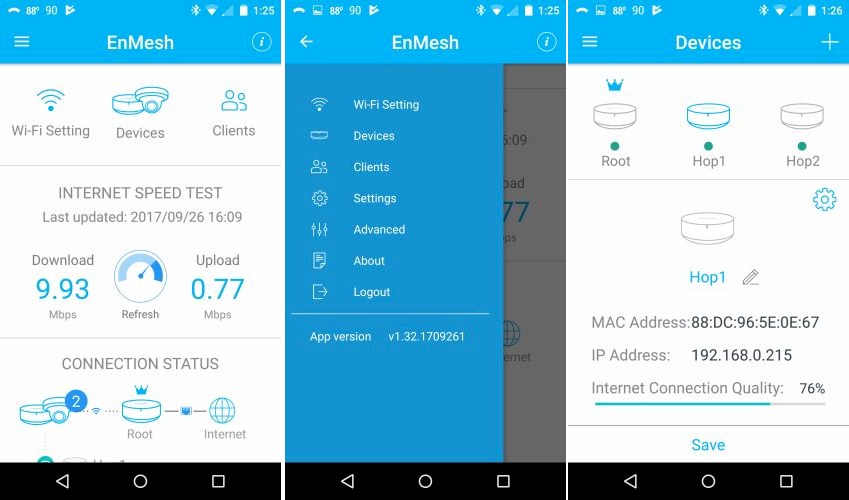
EnMesh app – Home, Menu, Devices
You can also see mesh connection quality for each node by tapping the node listed under the Connection Status section of the Home screen. For multi-hop configurations, it’s not clear which connection quality this is referring to.
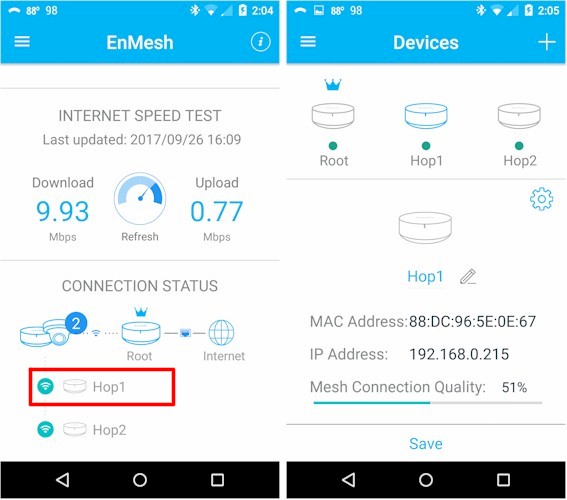
EnMesh app – Mesh Connection Quality
The next screenshot pair show primary and guest SSID and encryption key setup. The only encryption type supported is WPA2/AES, but you can disable encryption on both the main and Guest networks if you like to live dangerously. Although you can set channel and bandwidth for both bands, you get only one SSID for both bands. Note that DFS channels are not supported.
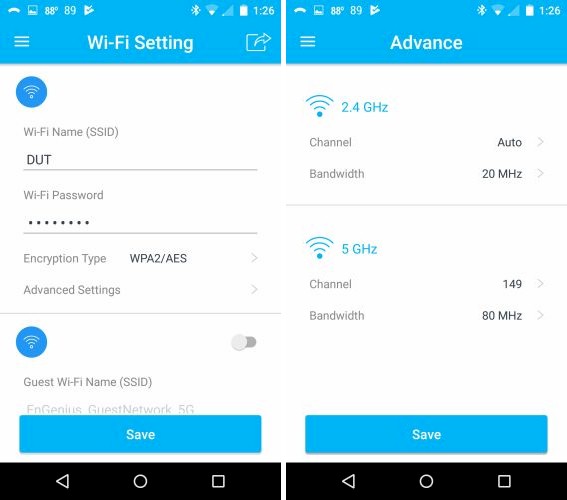
EnMesh app – Wi-Fi
Wired and wireless connected clients are shown in the Clients page. Note the via Root that shows the mesh node the device is connected to. Tapping a client brings up the Rules screen, which doesn’t work right now. Note you can’t change the name of the client and you can’t define user profiles and assign devices to users.
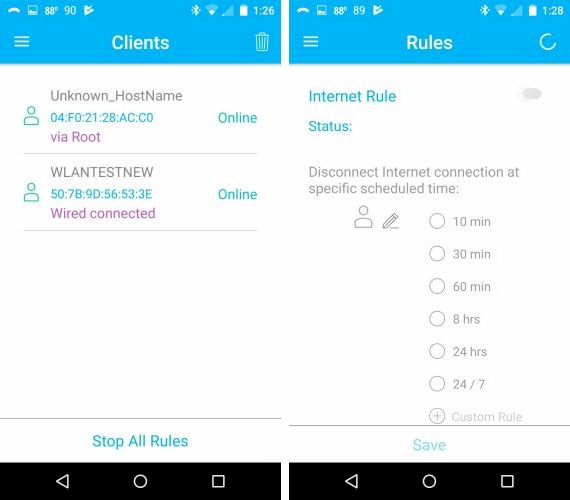
EnMesh app – Clients
Speaking of things that don’t currently work, you’ll need to hit the specifications page and look carefully. These specs are not directly linked from the EnMesh page you are most likely to land on at EnGenius’ site. I was only able to access the page because I asked EnGenius for links to documentation. There is no user manual, only FAQ scattered among the special EnMesh microsite and HelpCenter site. The latter is not organized by product, so happy hunting for what you’re looking for.
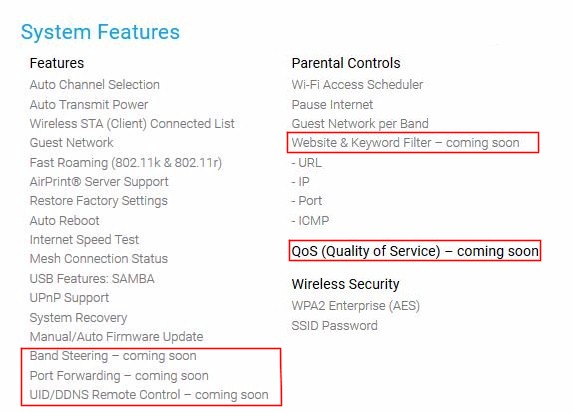
Some features are coming soon
When you eventually get to the web admin interface, you’ll find more features there than we’ve come to expect from "mesh" systems.
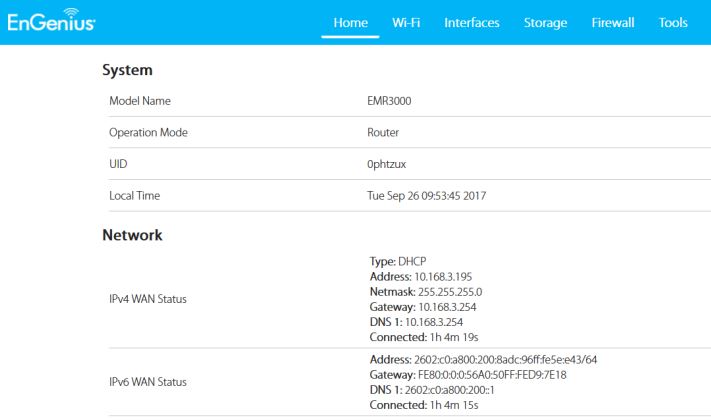
EnMesh Web admin
The slideshow has more screenshots and commentary.

Top of Home screen with network info. The UID is used with DDNS for remote access.
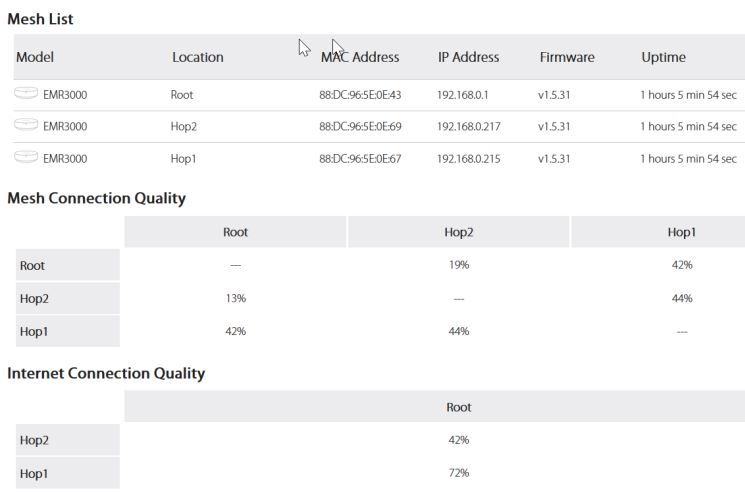
Lots of information on connection quality. I’m surprised Hop 2 has any usable signal to Root.
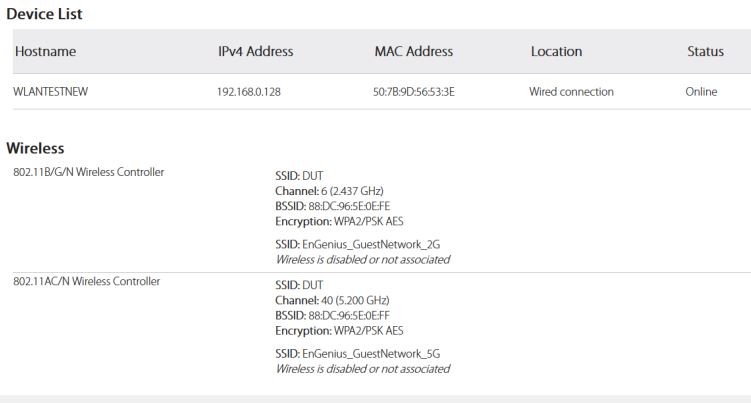
More summary info.
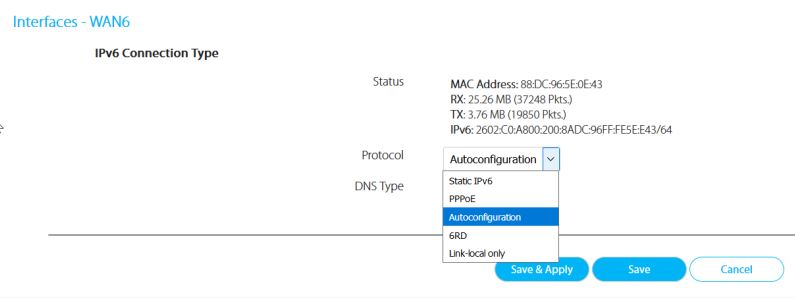
IPv6 WAN is supported with Static, PPPoE,6RD, Link local and Autoconfiguration types
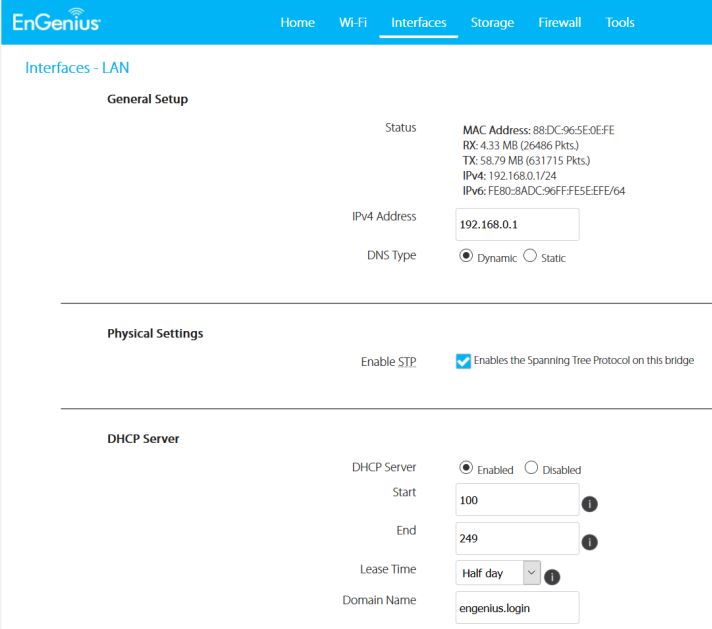
EnMesh is the first Wi-Fi system I’ve seen with STP support.
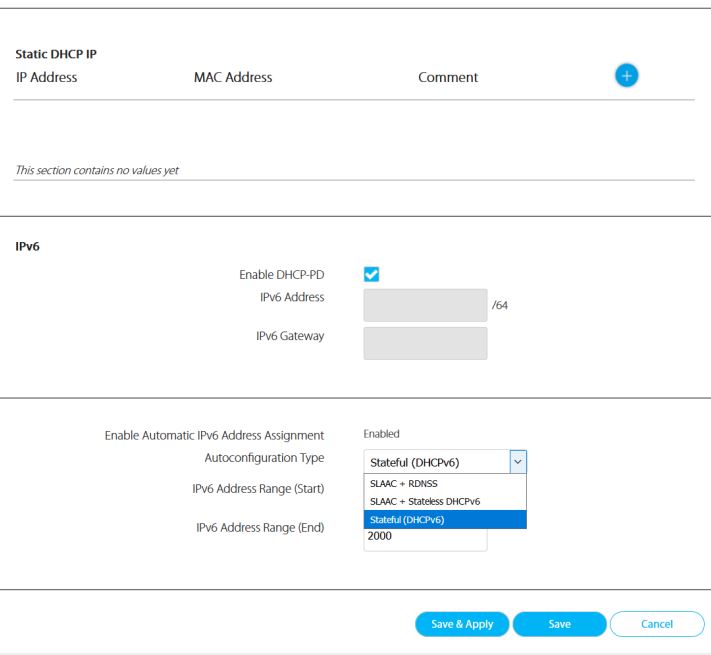
DHCP reservations and IPv6 LAN address settings.
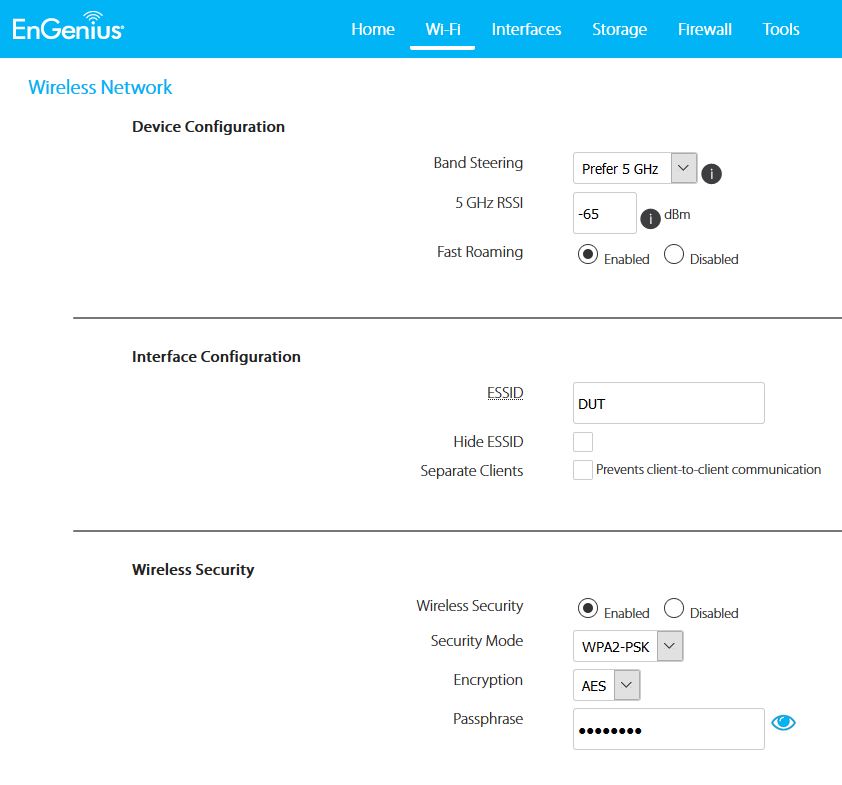
Default settings shown. Band steering can be set to Prefer 5 GHz (default), Force 5 GHz and Band Balance
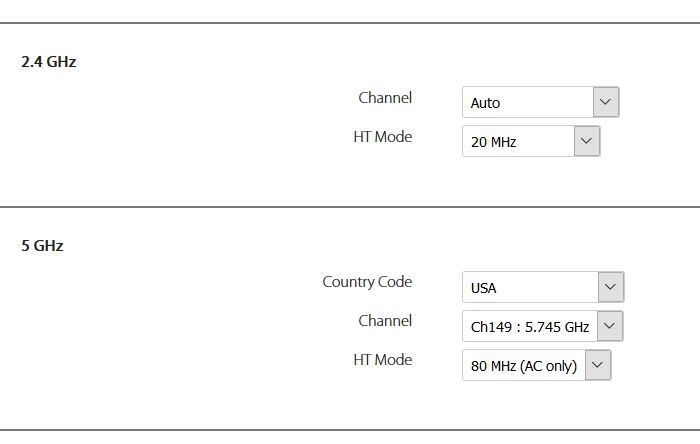
Channel and bandwidth default settings.
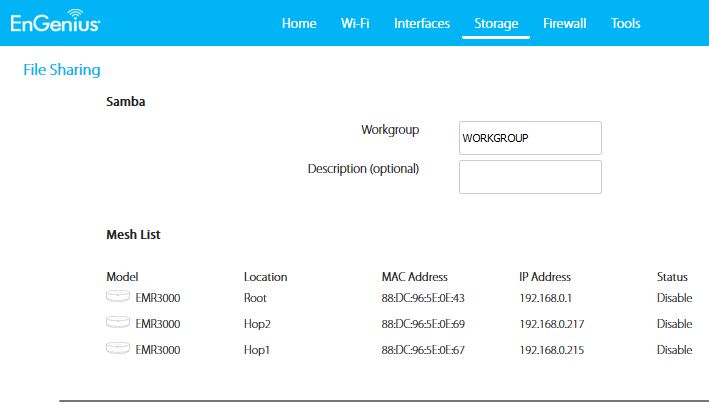
USB drives can be shared from all nodes.There’s nothing you can change on this screen. You must enable SMB in the app.
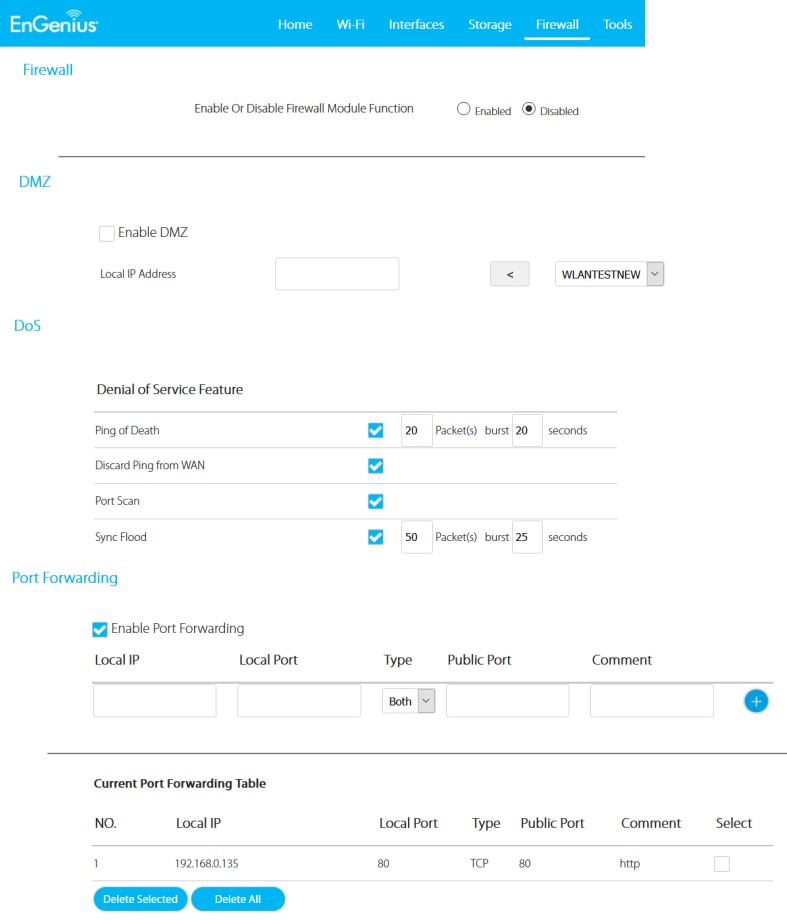
Mashup of Firewall Setting, DMZ, DoS and Port Forwarding screens. Firewall is default enabled. It was disabled for router throughput testing.Port 80 was also forwarded for testing.
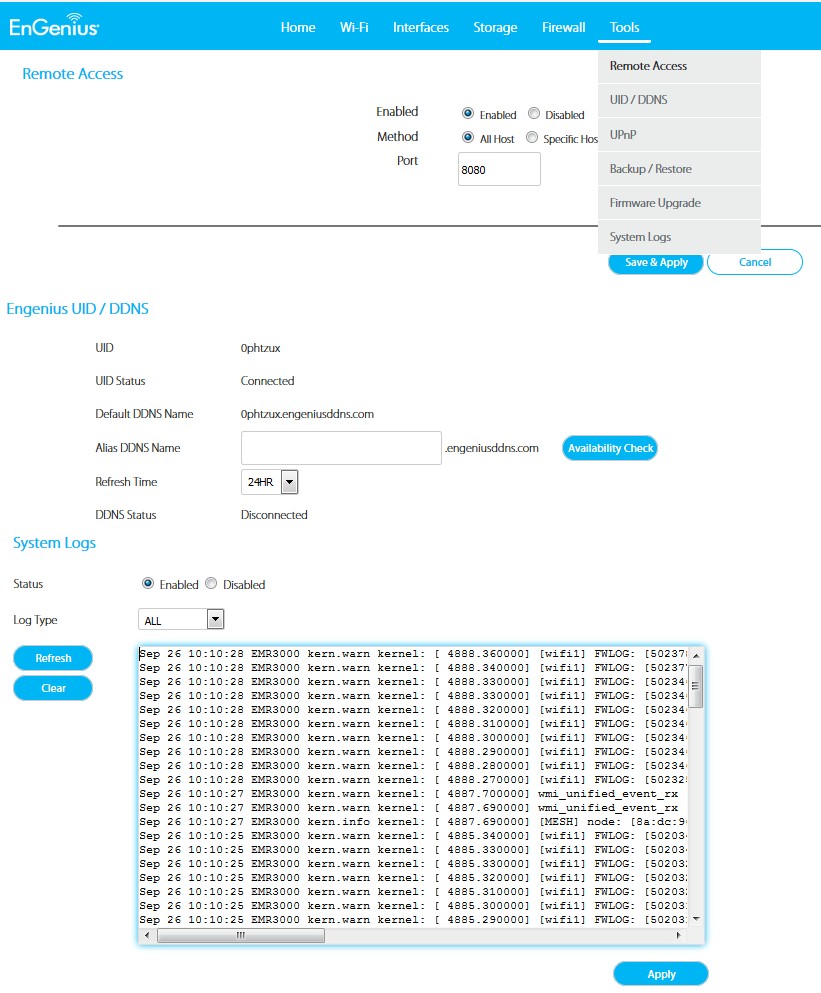
Tool screen mashup. Note the DDNS settings.UPnP (not shown) is enabled by default and can be disabled.
Storage Sharing
EnMesh supports SMB (Samba) file sharing, but it’s not the easiest thing to use. First, you’ll need either slim/small flash sticks or a cabled USB drive. I had to jam the typical flash drive in the lower photo into the connector. The connector panel notch slopes upward toward the back edge, so the flash drive cover exerted some torque on the USB connector.
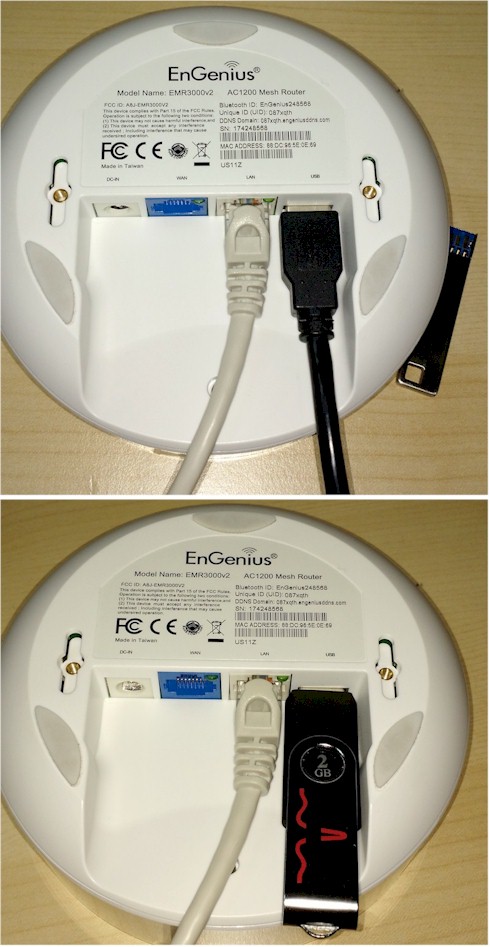
Connecting USB drives to EnMesh
You can plug a drive into each node and it will appear as a separate share. You must enable each drive, which can be done only in the Device settings page in the app. The web GUI Storage page only displays status.

EnMesh Web GUI Storage page
Since the port is USB 2.0, I would expect throughput in the mid 20 MB/s range at best. Since most Wi-Fi Systems don’t support storage sharing, it’s not one of our benchmarks so was not measured.
Update 9/29/17
I decided to go back and run a quick storage test using our standard drive and robocopy script on a FAT32 formatted volume. I measured about 6 MB/s write and 7.5 MB/s read. I noticed Windows Explorer took a long time to update the folder window when drag-and-dropping a file > 1 GB.
Routing Performance
All performance tests were done with v1.5.31 firmware and v1.32.1709261 Android app using select tests from the Version 10 Router process.
The iperf3 WAN to LAN and LAN to WAN throughput tests came in at 933 and 927 Mbps, respectively. This puts it in the top group of Wi-Fi Systems for this relatively unstressful test. The test was run with default settings, which had Firewall and all DoS protections disabled.
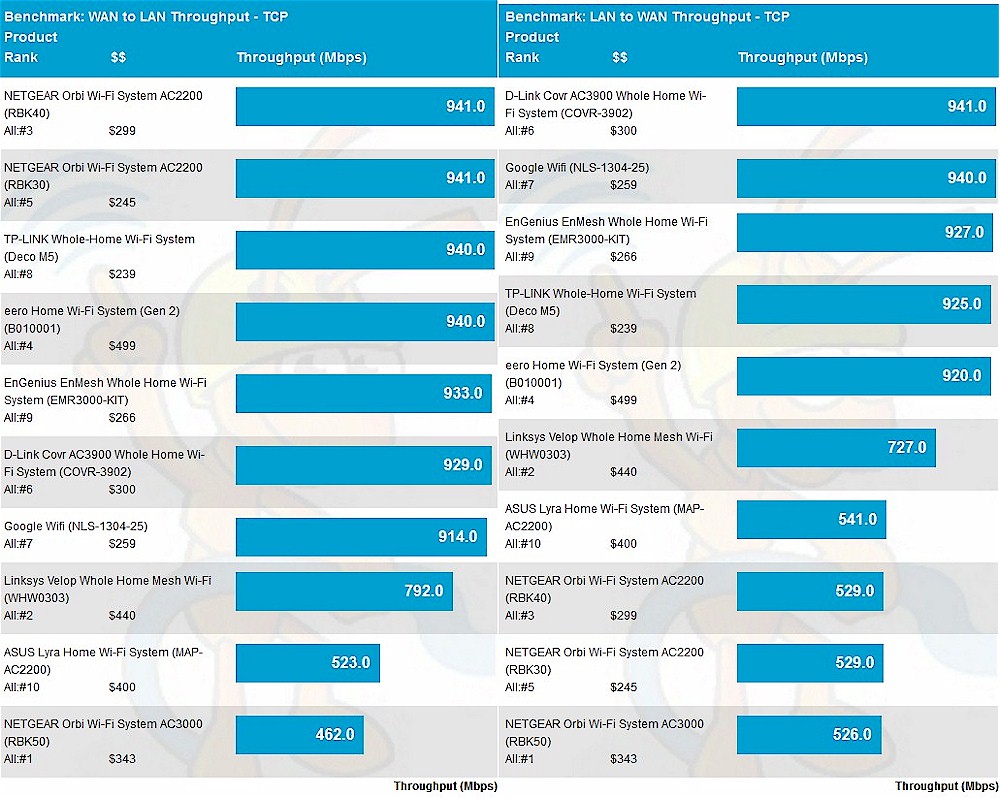
Routing throughput – iperf3 method
The HTTP test method proved its worth, causing EnMesh to reboot every time the 10KB filesize test was run. I experimented with disabling the DoS protections, which had no effect. But disabling the Firewall Module Function (Web GUI Firewall > Firewall Setting menu) did the trick, allowing the full test to run.
The plot below compares EnMesh with TP-Link’s Deco M5 and Google Wifi, two of the more aggressively priced three node Wi-Fi Systems that also do not have a second 5 GHz radio. EnMesh performed better than the TP-Link, but not as well as Google Wifi.
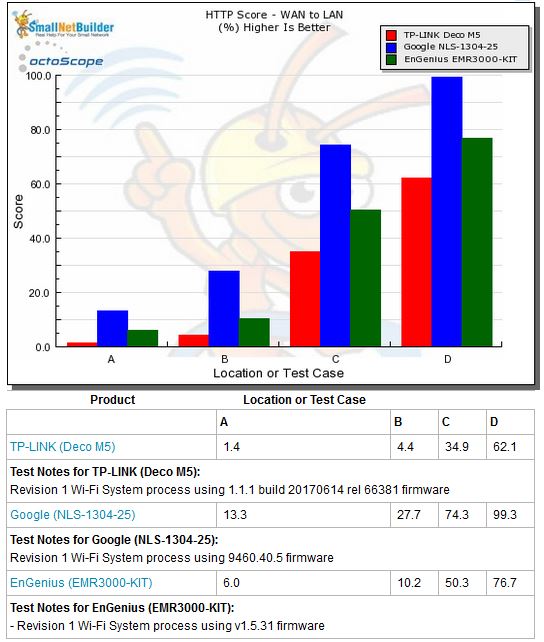
Routing throughput – HTTP Score comparison – WAN to LAN
Plot key file size: [A] 2 KB, [B] 10 KB, [C] 108 KB and [D] 759 KB file
Results are very similar for uplink.
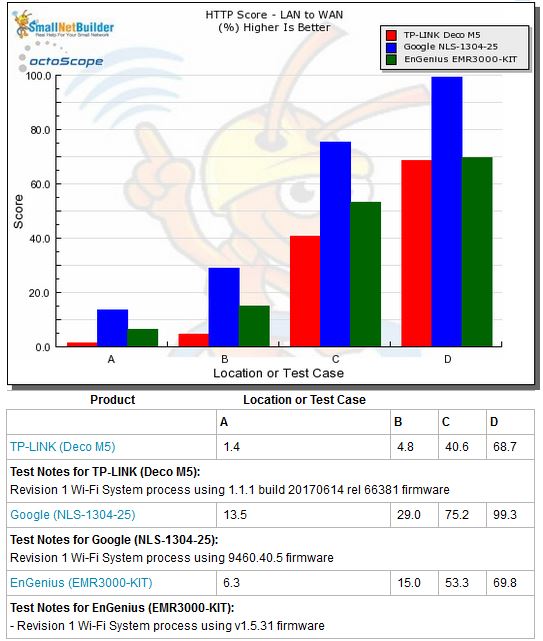
Routing throughput – HTTP Score comparison – LAN to WAN
Wi-Fi Performance
EnMesh was run through our new Wi-Fi System test process, letting EnMesh use whichever channels and bandwidth it chose. We’ve been seeing many Wi-Fi Systems use 40 MHz bandwidth in 2.4 GHz, which gives them an advantage in our process, which uses a clean RF environment with no neighboring networks.
In the real world, APs and routers are supposed to fall back to 20 MHz bandwidth if a neighboring network is operating on an interfering channel. I experimented with setting up a beaconing AP to try to force fallback to 20 MHz, but found the method was not reliable. I asked eero and TP-Link to explain why their products did not appear to fall back to 20 MHz bandwidth. Only eero replied, saying they adjust transmit bandwidth on a frame-by-frame basis. I’m not clear whether this is a loophole in the 802.11 standard, but that’s eero’s explanation.
At any rate, while EnGenius chose auto channel selection as EnMesh’s 2.4 GHz default, it also set default bandwidth to 20 MHz. Since this is the default, I didn’t change it or either the 2.4 or 5 GHz channels, as per our test method. This gives EnMesh the same disadvantage Google Wifi has in our Wi-Fi System Charts and Ranker, since Google also has chosen 20 MHz bandwidth for its 2.4 GHz radio
Here’s what EnMesh looked like in the octoBox 18" test chamber. I stayed with TP-Link’s Deco M5 and Google Wifi to compare with EnMesh for the Wi-Fi benchmarks.
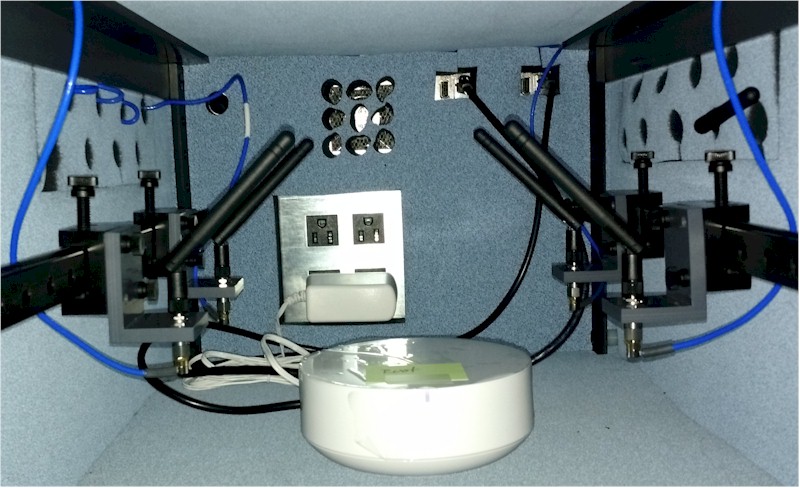
EnMesh in test chamber
Update 9/29/17
I should note a departure from the "set-to-defaults" test configuration. The first part of the test process discovers each radio’s BSSID (MAC address) and operating channel, but the test client was unable to associate on the 2.4 GHz band with the default Prefer 5 GHz and -65 dBm 5 GHz RSSI settings. I had to use the web admin interface and set the Band Steering and Fast Roaming controls to Disabled so that 2.4 GHz association could occur.
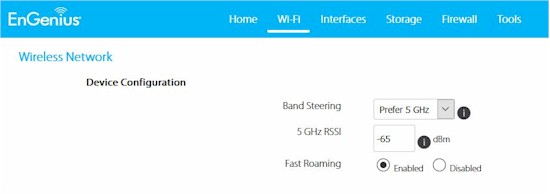
Settings for Wi-Fi test
I confirmed both 2.4 and 5 GHz RSSIs were well above the -65 dBm threshold. So this feature may require more work.
Throughput vs. Attenuation (RvR)
The Rate vs. Range or RvR benchmarks look at how throughput varies with decreasing signal. This test is done on the root node, so is a best-case view and does not include any effects from backhaul links.
The 2.4 GHz downlink plot shows EnMesh and Google Wi-Fi tracking together, due to their 20 MHz bandwidth settings, and Deco running higher since it uses 40 MHz bandwidth.
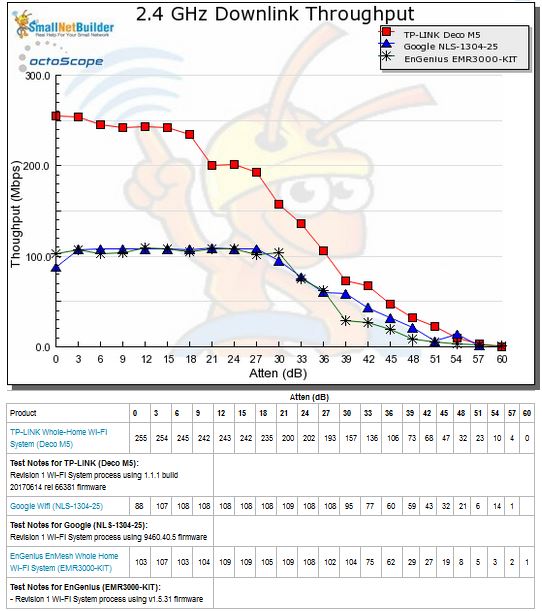
Throughput vs. Attenuation – 2.4 GHz downlink
2.4 GHz uplink shows a similar pattern except Google Wifi disconnects much earlier than EnMesh.
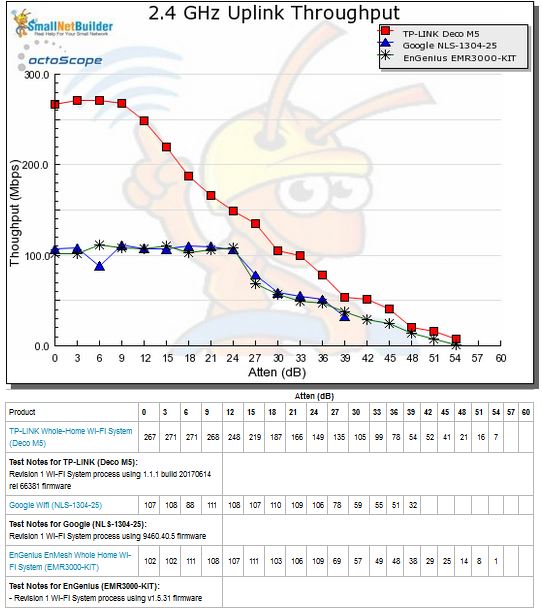
Throughput vs. Attenuation – 2.4 GHz uplink
5 GHz downlink performance is a bit more difficult to parse, with most differences in the smaller attenuation values (stronger signals). EnMesh seems to be on the low side of the other two products in the early going, with all meeting up with around 30 dB attenuation.
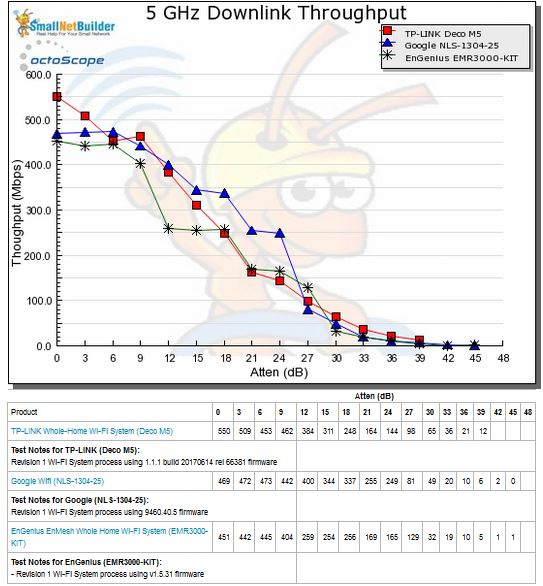
Throughput vs. Attenuation – 5 GHz downlink
EnMesh seems to do better for 5 GHz uplink in the low attenuation tests. It stayed connected one 3 dB click longer than the TP-Link and both outlasted Google Wifi by at least 12 dB.
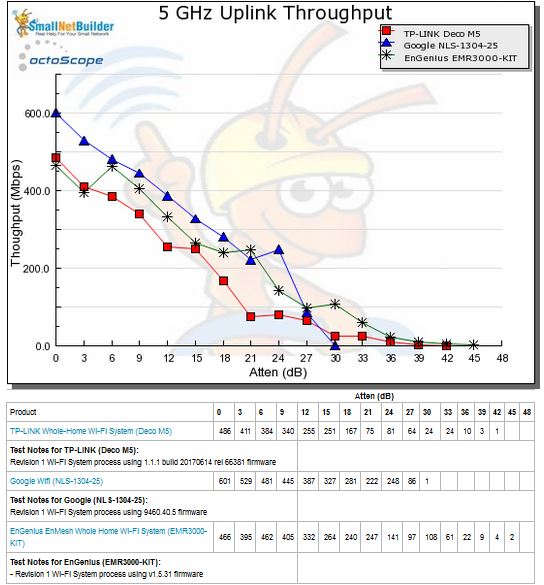
Throughput vs. Attenuation – 5 GHz uplink
Here’s where the average charts might be more helpful. All three products are near the bottom of the downlink chart, but EnMesh and Google Wifi make it into the middle for uplink.
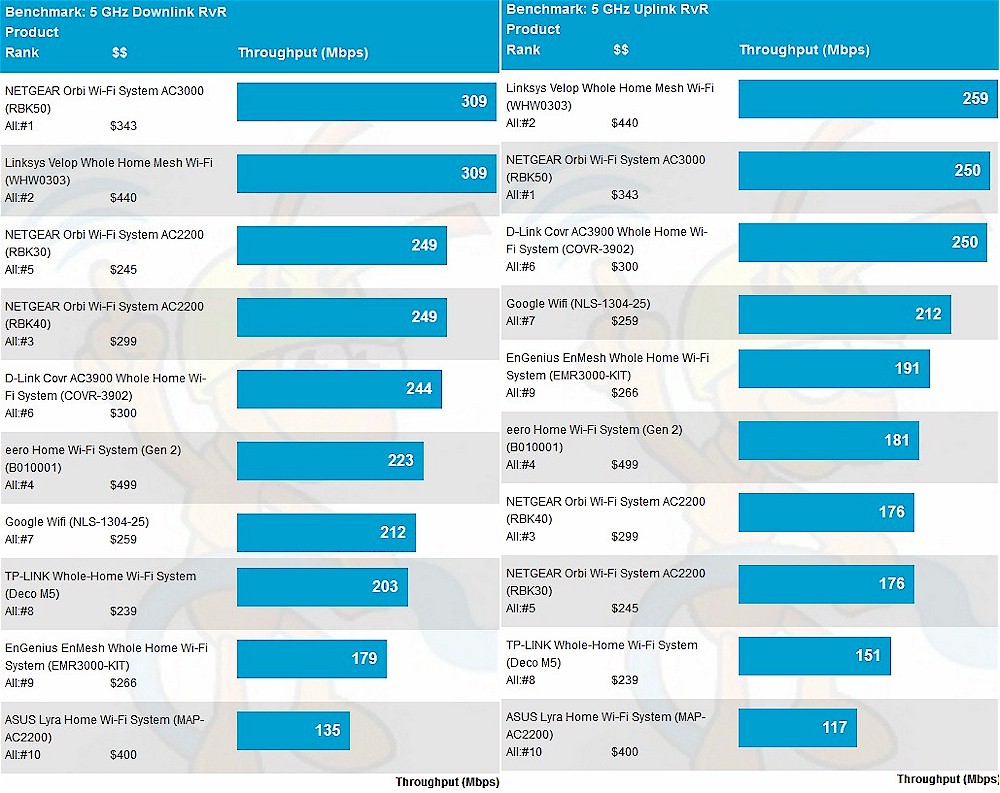
5 GHz average throughput
Backhaul
We also directly measure backhaul throughput, which tends to be a good predictor of mesh performance. Mesh nodes can only pass on to Wi-Fi devices attached to them—including mesh nodes—at best as much bandwidth as they receive. So if backhaul bandwidth to Hop 1 is only 100 Mbps, bandwidth available to Hop 2 can only be lower.
These tests run traffic between the root node LAN-side Ethernet port and mesh node Ethernet port. These benchmarks also show how much throughput is available to Ethernet devices you may wish to connect, using mesh nodes as wireless bridges. Hop 1 shows EnMesh at the bottom for downlink and next to last for uplink.
These results are puzzling because they seem to indicate EnMesh is using 2.4 GHz for backhaul. But the numbers, especially uplink, are higher than the maximum measured in the RvR tests. If 5 GHz backhaul is being used, the results should be much higher. The only explanation I have for these results is that bandwidth available at a mesh node Ethernet port is throttled down.
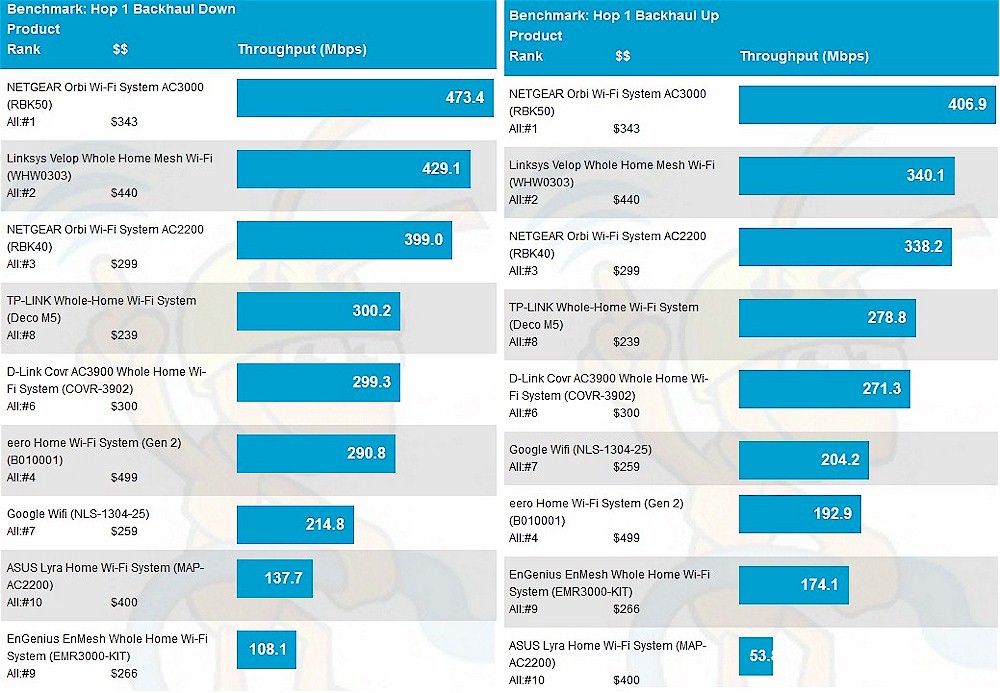
Wi-Fi System Backhaul – Hop 1
Hop 2 results are both at the bottom of each chart.
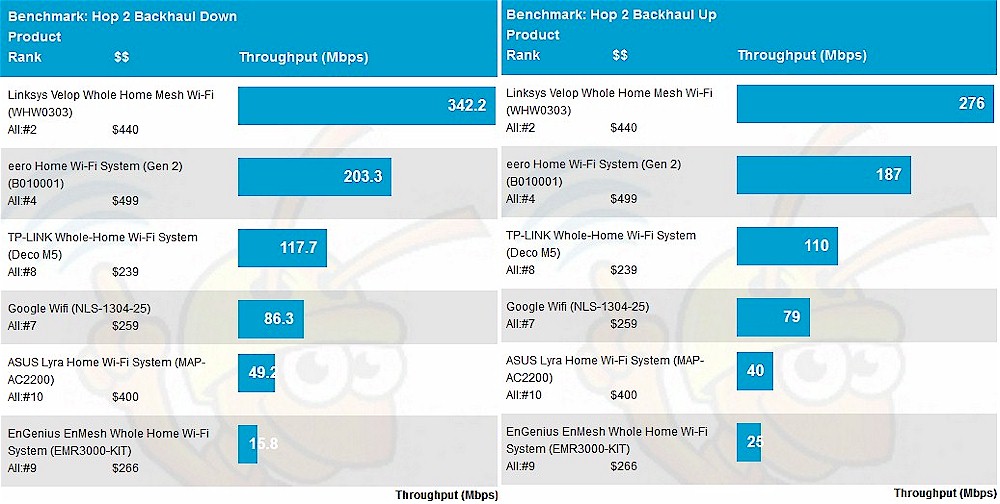
Wi-Fi System Backhaul – Hop 2
Wi-Fi System
These benchmarks measure up and downlink 2.4 and 5 GHz throughput at each system node, by "walking" the octoScope Pal dual-band test client from node to node. Since tests are made with 0 dB attenuation between the Pal test client and each system node, all measurements are best case. As signal levels between system node and client drop (i.e. distance increases), throughput will decrease proportionate to the RvR curves above.
These tests are highly influenced by what’s happening in the backhaul in each node. Focus on the 5 GHz results in particular, since from the RvR results, we know EnMesh can deliver at least 450 Mbps on the root node with no backhaul involved.
The 2.4 GHz downlink chart shows throughput measured at each node, with the A bars being the root node, B bars the Hop 1 node and C bars the Hop 2 node. EnMesh is the weakest performer except for the Root node (A) case. Keep in mind Deco is using 40 MHz bandwidth while Google and EnMesh are using 20 MHz.
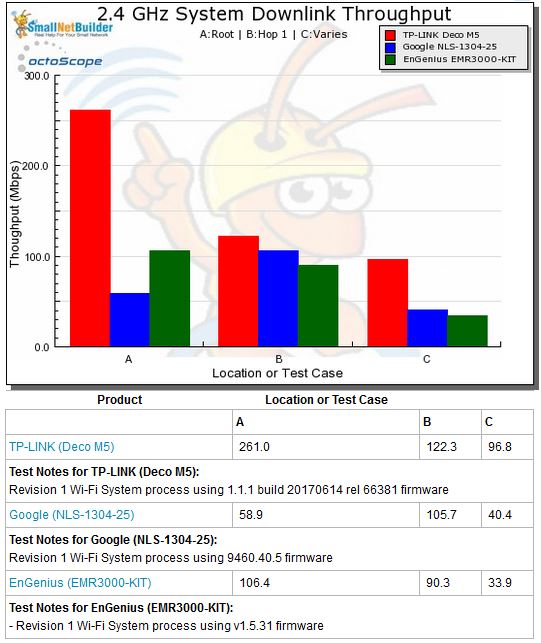
Wi-Fi System Performance – 2.4 GHz downlink
EnMesh holds its own against Google Wifi on 2.4 GHz uplink connected to Root and Hop 1, but falls back for Hop 2.
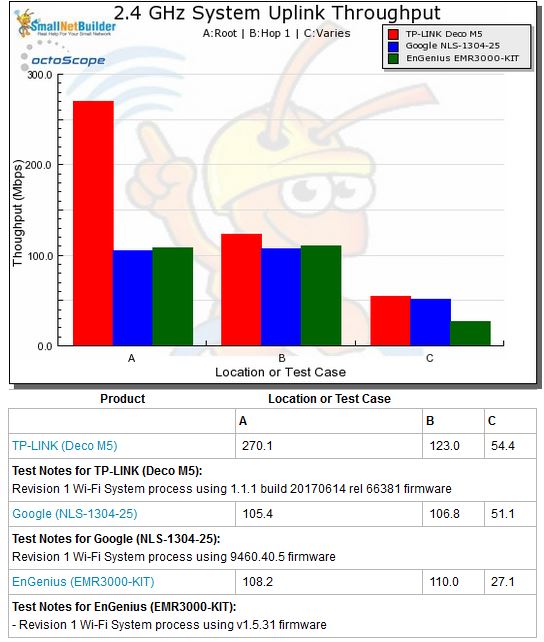
Wi-Fi System Performance – 2.4 GHz uplink
5 GHz downlink levels the playing field with all products using 80 MHz bandwidth. But it doesn’t help EnMesh rise to the top of the field, since it trails the two other products in all three tests.
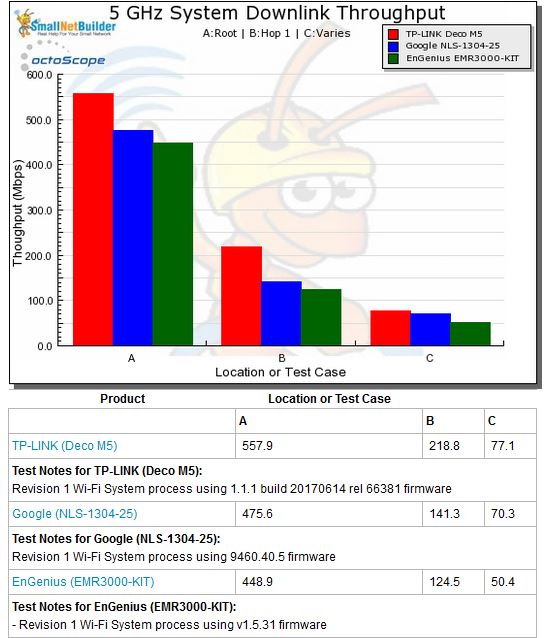
Wi-Fi System Performance – 5 GHz downlink
5 GHz uplink also shows EnMesh turning in the poorest performance.
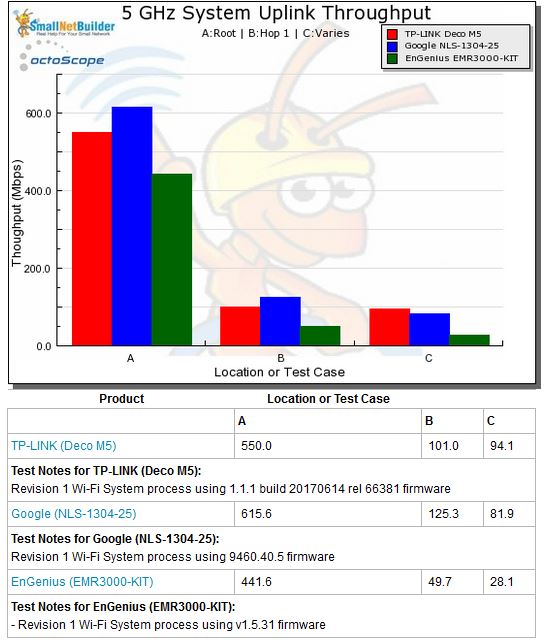
Wi-Fi System Performance – 5 GHz uplink
Capacity
Our Wi-Fi System capacity test uses three 2×2 AC clients, one connected to each node of three node systems. Traffic is then run to all three clients simultaneously and throughput measured for each traffic pair. A 2.4 GHz client is connected to the root node and 5 GHz to the others.
The Capacity bar chart shows total throughput for the three test clients in each direction. Since previous tests have shown low backhaul capacity, I didn’t expect EnMesh to do very well in this test and it didn’t. It came in dead last for uplink and second to last for downlink.
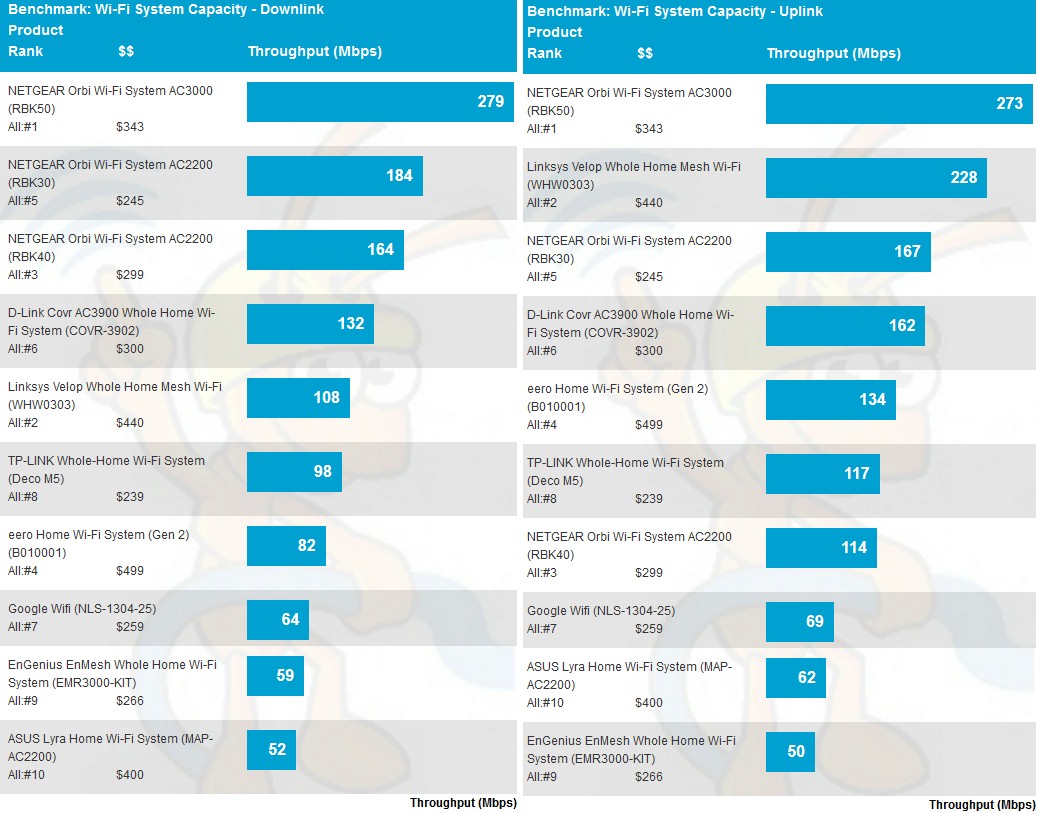
Wi-Fi System Capacity
The next plots compare EnMesh, Google Wifi and TP-Link Deco at each node. Results are about what you’d expect, given the previous results. The main surprise here is that Deco does so poorly for Case C, which is the second 5 GHz client connected to the Hop 2 mesh node.
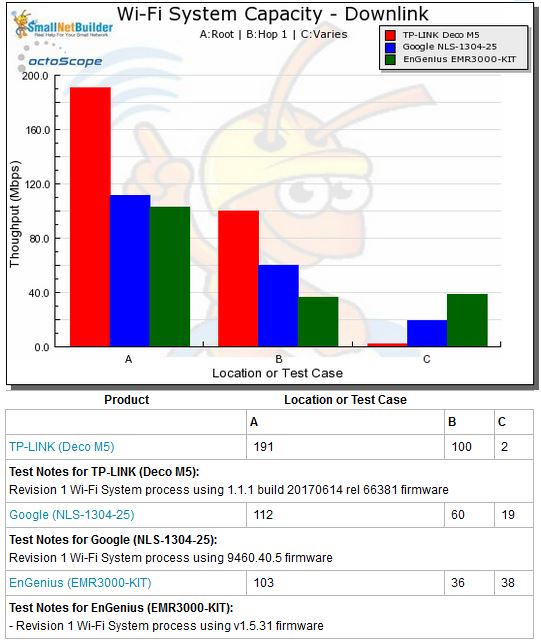
Wi-Fi System Capacity by Test Case – downlink
Uplink finally gives EnMesh one win for Case C.
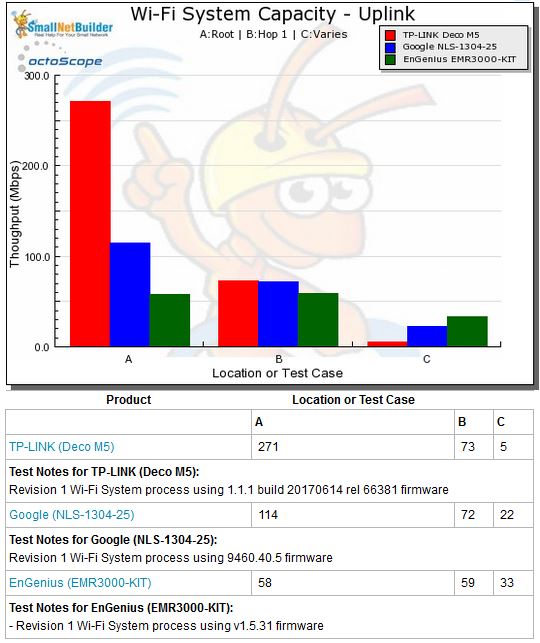
Wi-Fi System Capacity by Test Case – uplink
We can also see throughput changes over the course of the tests. The downlink plot shows steady throughput for all three streams, which is a good thing. Root node has the highest throughput and Hop 1 and 2 have about the same.
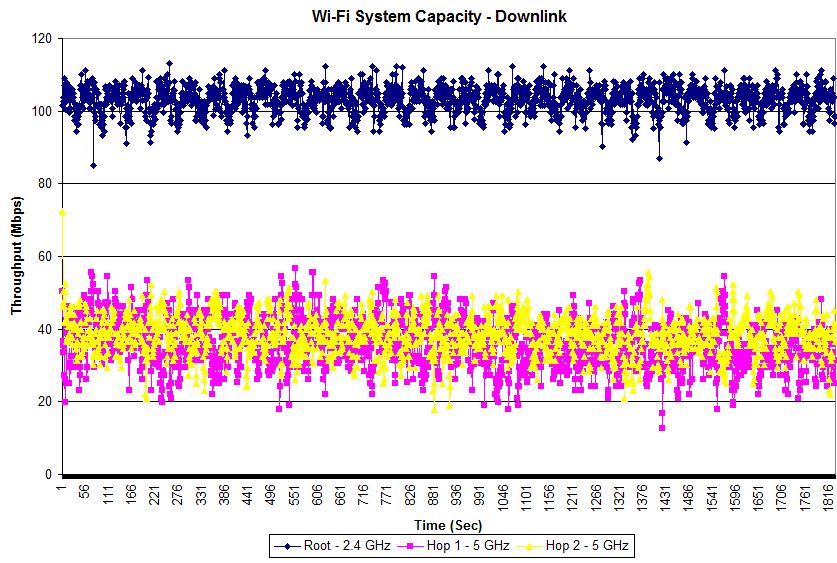
Wi-Fi System Capacity vs. time – Downlink
Uplink is more interesting in that Root node throughput is significantly lower, tracking with Hop 1, which shows occasional jumps into higher throughput territory. The main takeaway is that there is no evidence of bandwidth adjustment throughout the 30 minute test period.
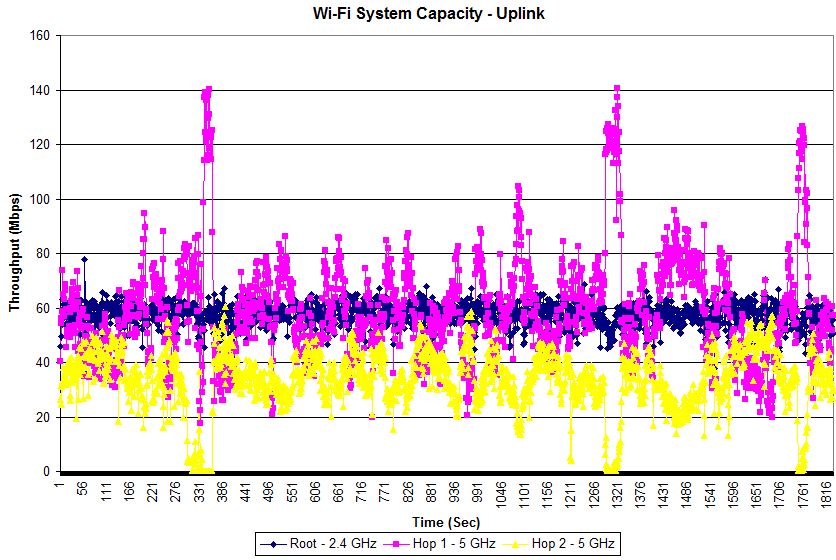
Wi-Fi System Capacity vs. time – Uplink
Closing Thoughts
EnGenius’ EnMesh is not an attractive choice for Wi-Fi System shoppers. Coming in at #9 in our Wi-Fi System Ranker, there are plenty of better performing products above it. Even if you sort by price, TP-Link’s Deco M5 at around $240 and ranked at #8 would be a better choice than EnMesh, which is currently around $266. And then there are Google Wi-Fi and wall-plugged Orbi mini, which are also less expensive and higher ranked.
The only advantages EnMesh has are its storage sharing and Wi-Fi controls available via its web GUI. But for most shoppers, those pros are not going to be enough to make the sale over much more established products with better brand name recognition.
